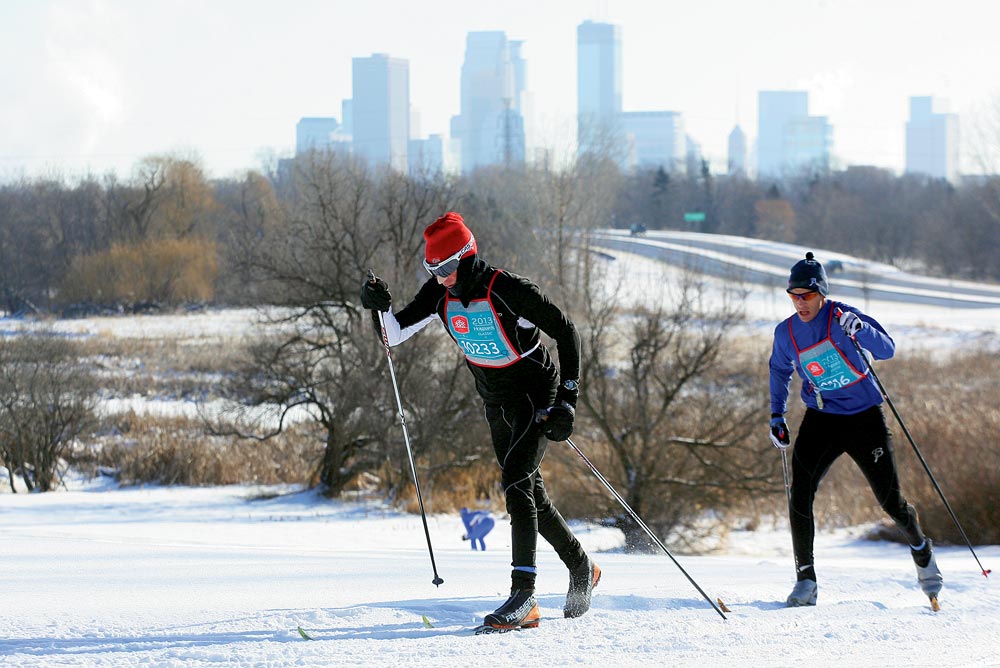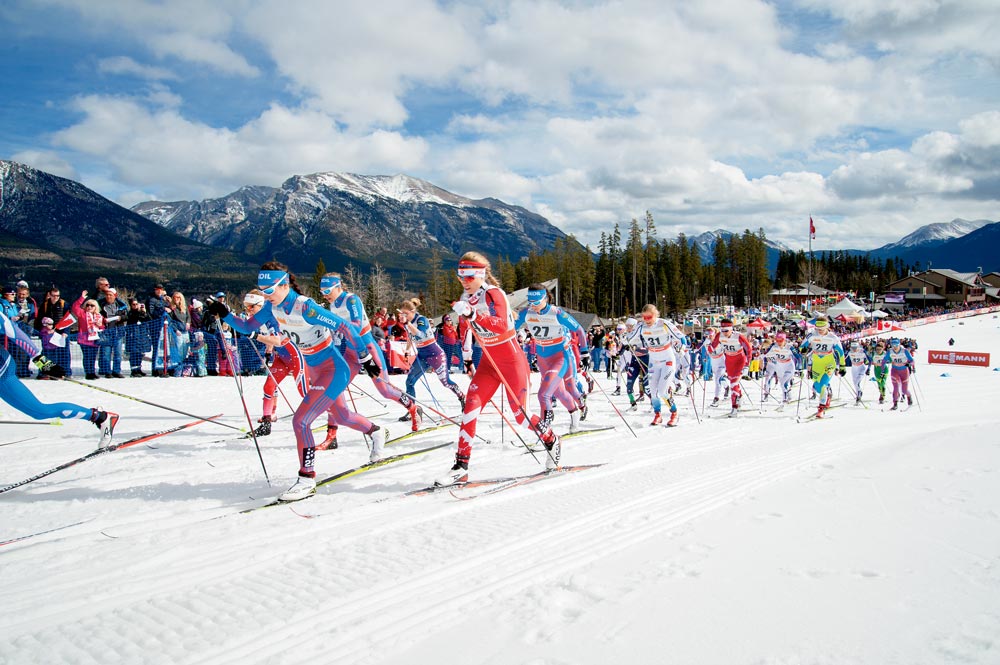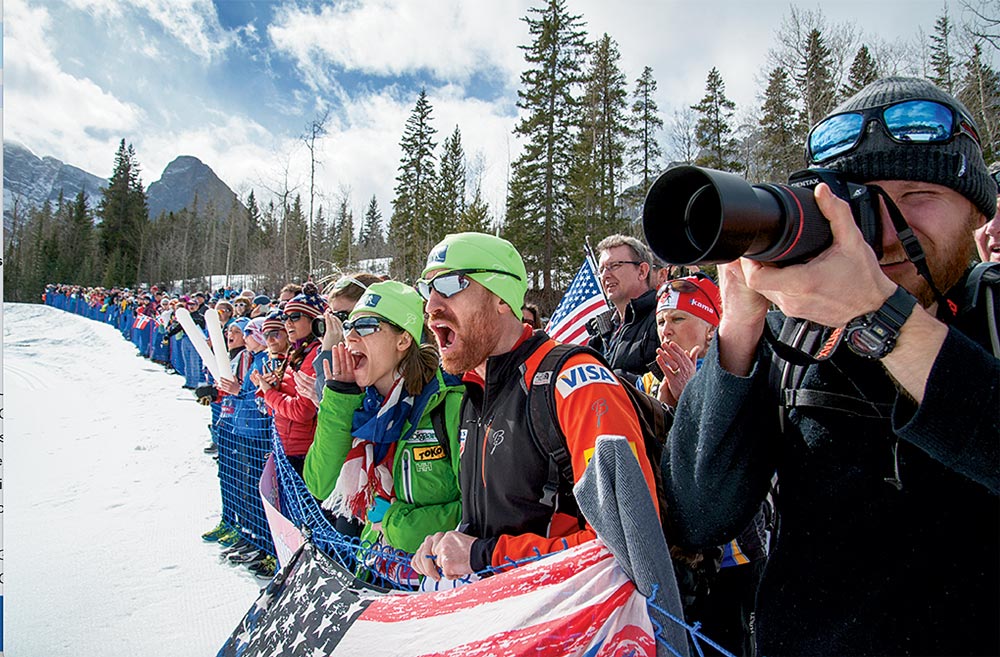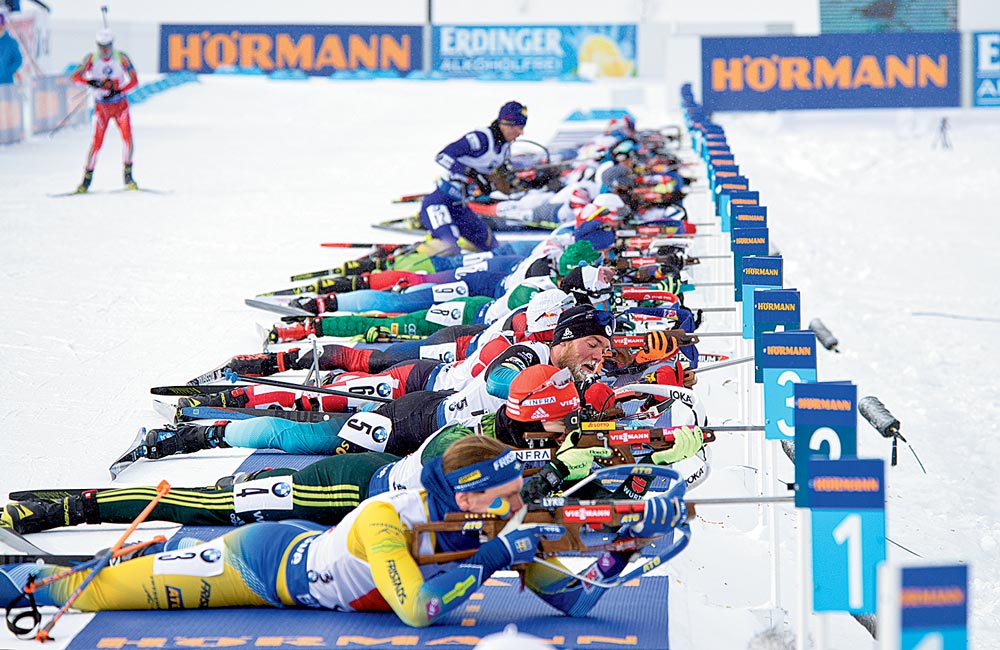
Jessie Diggins has always wanted to race a World Cup on home snow. This coming February, on trails that she raced as a junior near her hometown in Minnesota, the three-time Olympic medalist’s dream will come true. Minneapolis’s Theodore Wirth Park will host men’s and women’s freestyle sprints (Feb. 17), followed by 10-kilometer free individual start races the next day (Feb. 18) on a hilly 3.3-kilometer loop—a unique setting for a World Cup race within a city’s limits. The races also happen to be two of Diggins’s specialties.
“You’ll have an opportunity to see the best skiers in the entire world drag race right here over this bridge and into the finish,” Diggins said in an Instagram reel this past summer as she ran along the course. “It’s going to be an incredible opportunity to be inspired and inspire the next generation.”
The Loppet Cup, as it’s being called, will start just four days after a World Cup at the Canmore Nordic Centre Provincial Park in Alberta, where athletes will compete in a freestyle sprint and two distance races on February 9–11. Originally, Calgary was slated to host a classic sprint on February 13, but “the race just wasn’t going to be feasible for us,” says Norbert Meier, events chair of the Alberta World Cup Society. The sprint was moved to Canmore, still on the 13th, following a day off on February 12 “for everyone to catch their breath,” adds Meier.
It’ll be the first time in almost a quarter-century that U.S. ski fans can watch a FIS cross country World Cup in person (Utah’s Soldier Hollow hosted a World Cup in 2001 as a test event for the 2002 Olympics). Minneapolis was slated to host a World Cup sprint in March 2020, but the pandemic scuttled the race just days before it was scheduled to happen. The final World Cups of the 2020 season, planned for Canmore, were also canceled.

And thanks to the Share Winter Foundation—a nonprofit aimed at enriching the lives of youth through winter sports that’s partnered with the Loppet Foundation to host the event—the 2024 Minneapolis World Cup offered free general admission tickets. Within a day of becoming available last July, all the tickets were snapped up, including paid grandstand seating and $500 VIP experience packages. The Canmore World Cup is free for spectators, including grandstand seating; reservations and VIP tickets will be available later this winter (albertaworldcup.com).
“Think about other sporting events where it’s the best athletes in the entire world; if you want to get a front row seat, it’s expensive, right?” Diggins said in a press conference about the Minneapolis event. “If you want to bring your family, your kids, it’s not accessible to everyone. But [these races] will be.”
Organizers hope these back-to-back weekends of North American racing will boost interest in cross country skiing in both countries. The two organizing committees are working together to promote the races as a way of showcasing the sport and eventually bringing more sponsors on board. Says Meier, “it’s a model for the future.”
So why did it take four years to get the Minneapolis and Canmore World Cups back on the FIS calendar?
After the 2020 shutdown, the Loppet Foundation, an organization in Minneapolis that connects urbanites with the outdoors, initially hoped to get the Minneapolis race back onto the World Cup calendar for 2022. But the logistics of travel to and from an Olympic Games in China that winter, plus the continued uncertainty caused by the pandemic, made North American World Cup stops in 2022 unrealistic. This coming season (like in 2020) is a “down” year, with no Olympics and no world championships on the schedule. Thus FIS penciled in North America as an option during the midwinter gap normally filled by those huge events. But even then, race organizers had to convince teams in a Euro-centric sport to hop the pond.
“They know that occasionally they have to come out of that bubble and come to North America,” quips Meier. Canmore has hosted six World Cups since 2005.

But this time around, there’s another unprecedented aspect: that midwinter calendar slot. In the recent past, FIS scheduled North American races for the end of the season, meaning athletes only had to manage jetlag and racing on one end of the trip. In 2020, Minneapolis would have hosted a midweek sprint on March 17, with the racers then flying to Alberta for the final races of the season March 20–22.
This year, the entire month of February is allotted for the North American stops. The World Cup tour will leave Switzerland at the end of January and come to Canmore two weeks later. From Minneapolis, the tour will return to Scandinavia in March for the final four stops on the 2023–24 calendar. This will give athletes two weeks on either end of the North American races to cope with jetlag (eight hours between central Europe and Alberta and seven hours between Minneapolis and central Europe). “It’s a substantial time difference for aerobic athletes,” explains Meier.
For the organizers, the midwinter timing is great. Although both the Canmore Nordic Centre and Theodore Wirth Park make snow on their trails, February offers a greater chance of natural snow. Loppet Foundation Executive Director Claire Wilson is also happy that the Minneapolis World Cup was expanded from a one-day sprint (in 2020) to an entire weekend of racing.
While most of the athletes will head back to Europe from Minneapolis to readjust to the clock, Wilson and Diggins are hoping spectators will return to Theodore Wirth Park for a community celebration on February 19. It’ll be a chance for the Loppet Foundation to “showcase the best urban ski trail system in the nation,” says Wilson.
“Imagine getting to see the best athletes in the world in a sport you love and getting close enough to reach out to touch them,” said Diggins during the press conference (though hopefully no one heeds the last part of her comment). “Then the day afterward, you can go ski the trail yourself. I liken it to seeing a baseball game and afterwards, they’re like, ‘Hey, go throw around some balls on the field.’ That doesn’t happen in a lot of sports.”
To top it all off, the American Birkebeiner will take place the following weekend—three hours away from Minneapolis—in Cable, Wisconsin.
“It’s going to be an exciting couple of weekends in the Midwest,” says Wilson. Make that an exciting month of racing in the middle of North America.
Renovations Help Bring Biathlon World Cups Back to North America in 2024

Minneapolis and Canmore aren’t the only North American locations hosting World Cup races this year. The IBU World Cup will bring the top biathletes to Soldier Hollow in Midway, Utah, in March 2024 before moving to Canmore for the last races of the season. And both venues are laying out the red carpet. Or more like building it.
In June, the Utah Olympic Legacy Foundation (UOLF), which oversees Soldier Hollow, broke ground on a renovation and expansion of the competition building (originally constructed to host cross country skiers and biathletes at the 2002 Olympics). The $13.5 million project will add more than 19,000 square feet to the building, with an overhaul of the existing 7,670 square feet.
The expanded infrastructure means that “we don’t have to keep renting tents and trailers every time we do events,” Colin Hilton, UOLF president and CEO, told a Utah radio station in June 2023. “Instead of lots of porta-potties and temporary facilities, we’ll have those permanent facilities to properly host events. And oh, by the way, it’ll be set up to be usable for future games.” Most of the construction should be completed in late February, with World Cup competition starting on March 8.
Canmore also recently began upgrading its Nordic center. The $17.5 million project will modernize the facilities, replace the biathlon building and stadium and maximize snowmaking and storage capacity.
Both construction projects were undertaken in part to attract more international events to these venues and also to help inspire and develop the next generation of cross country skiers and biathletes.
The Soldier Hollow IBU World Cup starts on March 8, with a men’s relay and a women’s 7.5-kilometer sprint. After pursuit races on March 10, the biathletes will fly to Alberta for four days of racing in Canmore. Men’s and women’s mass start races on March 17 will conclude the 2023–2024 season.
This story first appeared in the Autumn 2023 issue of Cross Country Skier (43.1).